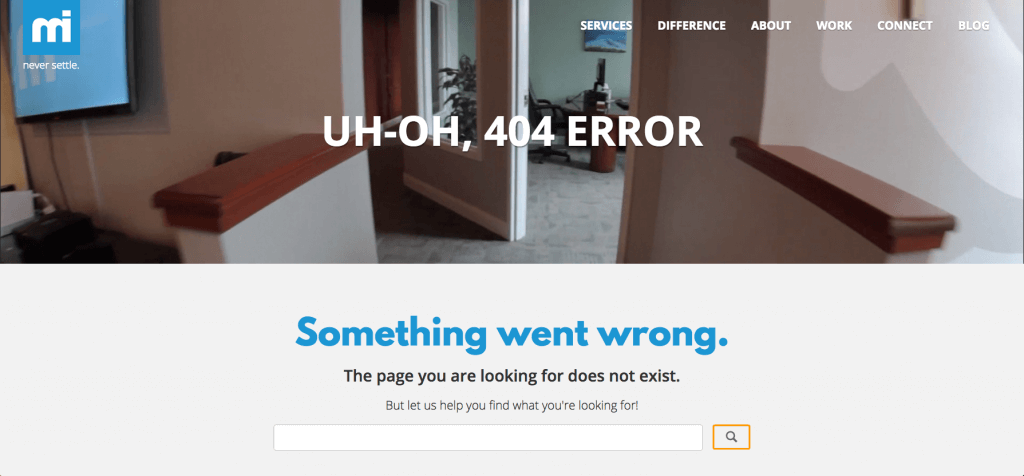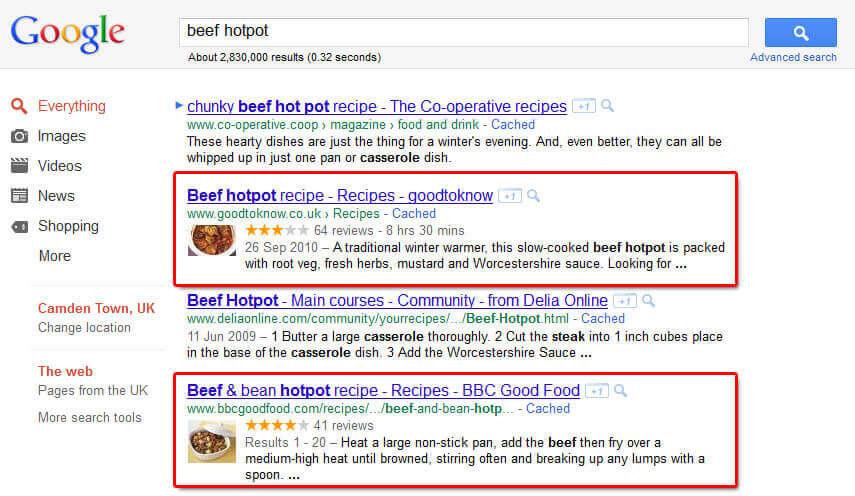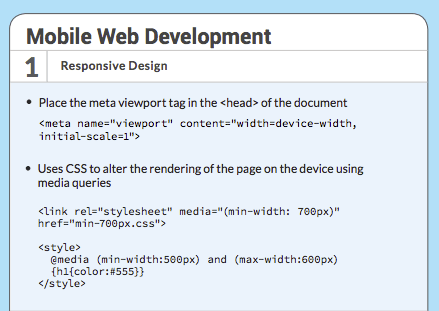9 SEO Concepts Web Developers Should Know
It’s a common misconception that once you publish something on the Internet, it immediately becomes integrated into this intersecting, all-inclusive highway that winds between different topics and industries. If you build it, people will come. However, this is not the case when it comes to web pages, especially ones hosted by sites that do not have a huge online presence. It takes a very conscientious and well-executed effort to draw traffic to your new page. Here are some integral pieces of SEO that we think web developers should always be focusing on.
1. Important HTML Elements
One of easiest things to customize on the site is the title tag and meta description. These are short, descriptive elements that give both search engines and people a brief understanding of what your site is about. While it takes many other elements for a link to be presented in a search query, the person viewing it is only presented with the title tag and meta description, along with the URL, and will make their decision based solely on this minimal information.

If you don’t utilize these elements correctly, the search engine will grab whatever content it can from your page and use that as the meta description and title tag. Both have a limited character count and need to be specifically targeted, so this could make a search result hard to understand or just sloppy looking. Use colloquial, relevant language that people will understand and want to read more about, and make sure your most important keywords are used.
2. URL Best Practices
Integrating important keywords into your URL is extremely important, as it is one the elements analyzed by search engines when running a query. In many cases, you’re going to have a few options when choosing a URL, and in this situation your best bet is choosing something short, and understandable. A preferred URL generally looks like this:
https://domain.com/example-url-using-keywords.com/
The more readable by humans, the better. A crazy mess of numbers and characters will make people less likely to click on your link since they do not know what they’re getting. We recommend that you copy the title of the webpage closely, and keep it as short as possible.
3. Canonicalization
Canonicalization is an another important factor to consider, and deals with web content in relation to more than one possible URL. Canonicalization is the process of directing all these other variations of your link to the one that you chose. It prevents redirect errors and allows web users to find your site easier. This usually is a practice applied to the home pages, since they are uncomplicated, general URLs that can be formatted a few different ways. Some basic variations look like this:
https://www.example.com
https://example.com
https://www.example.com/index.html
https://example.com/index.html
https://example.com/index.html&sessid=123
Your best bet is to the chose the link that is shortest, and to the point. Think of it as casting a broader net by allowing people to access your site through more than one link. Optimizing your URL is an important piece of SEO, and will ultimately allow both people and computers to understand and access your page better.
4. Accessibility
Crawlers are automated bots that search engines use when running queries. The crawlers will analyze your site and try to discern if it is relevant to the search. It’s important to make sure the crawlers are understanding your content correctly. Developers can do this by checking for crawl errors with MOZ and Google Webmaster Tools. These resources will report if there’s any technical problems such as:
- 4xx client errors
- 5xx server errors
- inaccessible pages
- soft 404’s
5. 404’s and Redirects
Incase there are accessibility issues with your site for some reason, it’s important to make sure your site can take care of this. Creating a custom 404 page is one of the first things a developer should do. Incase a user types in a URL or follows a link that doesn’t exist, your site should direct them to a page that doesn’t have any actual content, but allows them to continue to search for whatever they are looking for.

Another resources to utilize are 301 redirects. This functions allows developers to create a permanent redirect from one URL to a new one. This comes in handy when you change the URL to a site that is frequently visited and gets a lot of direct traffic. Make sure users are being redirected to relevant and functional pages so that you don’t lose any web traffic.
6. Rich Snippets, Structured Data, and Schemas
Structured data allows for an organized entry of design that keeps the design of it easy to navigate and search. This makes it much simpler for the computer to sift through the information on a webpage, and pick out what is important.
Rich snippets are the important pieces of information that will be easier read (because of your structured data) and pulled somewhere logical. For example, this rich snippet shows an average rating and an aggregate vote count which is more information than usually provided in a given search. These small, descriptive elements can also provide a phone number, date, time or location depending on how you structure it. Offering as much information as you can will help in finding the right kind of leads and driving up your click-through rate.
Schema is a type of vocabulary for tags that you can add to your HTML to enhance your rich snippets, and ultimately the way your page is represented on SERPs. Recognized by leading search engines such as Google and Bing, incorporating Schema allows your webpage to present the rich snippets you have created, making your link appear more legitimate and informative.

7. Site Architecture and Hierarchy
The navigation of a website should be simple and organized, and it’s important that visitors can quickly find the content they are looking for. The most efficient way to ensure convenience users is by using breadcrumb lists, which is a row of internal links at the top or bottom of the page. It allows users to quickly to jump to what they’re looking for, and then back to the root page. Follow these best practices when crafting the hierarchy for your site:
- Create a naturally flowing hierarchy – make it as easy as possible for users to go from general content to something more specific
- Set up category pages so users can find the content they’re looking for in a logical way
- Use mostly text for navigation, it make easier for search engine crawlers to understand
- Make sure your landing pages are high enough in the architecture to receive enough link equity
- Limit number of clicks to content – pages targeting highly competitive terms should be only one or two clicks from the home screen
- Prioritize content so the most important information is higher up in the pagination
- Include a site map – make your navigation logical and understandable
8. Mobile Web

9. Performance

Good content, as important as it is, won’t bring you the traffic you want on its own. SEO is crucial in bringing visitors to your site in search of an answer to their query. Without a good SEO check, it’s possible nobody will ever see all the excellent content and design you have done. Make sure you’re optimizing every part of your site to allow it the best chance for a high performance. For additional tips, take a look at the Moz SEO Cheat Sheet for an overview of SEO best practices.
Need help? Talk to our SEOs at SmartAcre. We’d love to help! LEARN MORE

